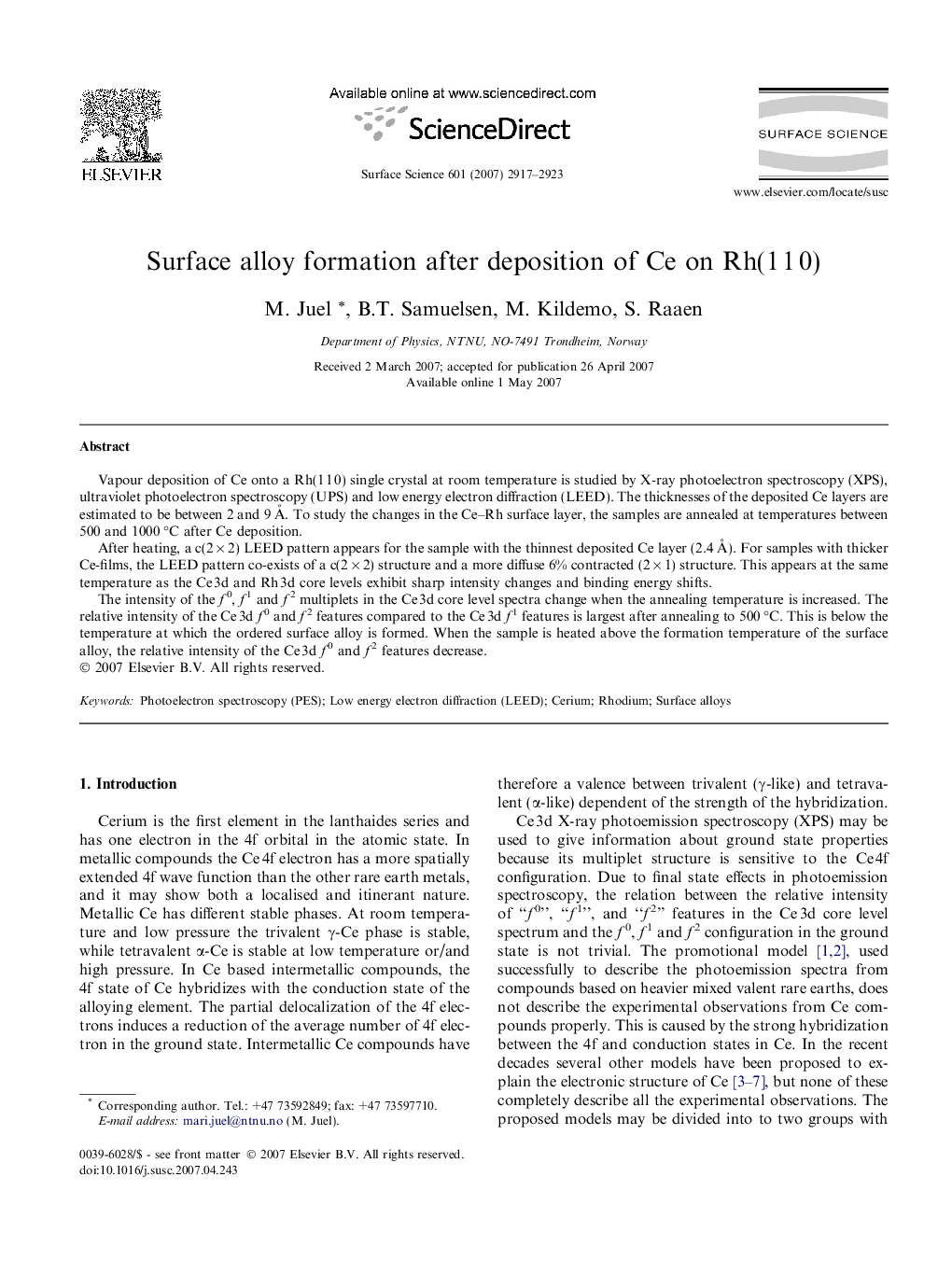| کد مقاله | کد نشریه | سال انتشار | مقاله انگلیسی | نسخه تمام متن |
|---|---|---|---|---|
| 5426618 | 1395893 | 2007 | 7 صفحه PDF | دانلود رایگان |

Vapour deposition of Ce onto a Rh(1 1 0) single crystal at room temperature is studied by X-ray photoelectron spectroscopy (XPS), ultraviolet photoelectron spectroscopy (UPS) and low energy electron diffraction (LEED). The thicknesses of the deposited Ce layers are estimated to be between 2 and 9 à . To study the changes in the Ce-Rh surface layer, the samples are annealed at temperatures between 500 and 1000 °C after Ce deposition.After heating, a c(2 Ã 2) LEED pattern appears for the sample with the thinnest deposited Ce layer (2.4 à ). For samples with thicker Ce-films, the LEED pattern co-exists of a c(2 Ã 2) structure and a more diffuse 6% contracted (2 Ã 1) structure. This appears at the same temperature as the Ce 3d and Rh 3d core levels exhibit sharp intensity changes and binding energy shifts.The intensity of the f0, f1 and f2 multiplets in the Ce 3d core level spectra change when the annealing temperature is increased. The relative intensity of the Ce 3d f0 and f2 features compared to the Ce 3d f1 features is largest after annealing to 500 °C. This is below the temperature at which the ordered surface alloy is formed. When the sample is heated above the formation temperature of the surface alloy, the relative intensity of the Ce 3d f0 and f2 features decrease.
Journal: Surface Science - Volume 601, Issue 14, 15 July 2007, Pages 2917-2923